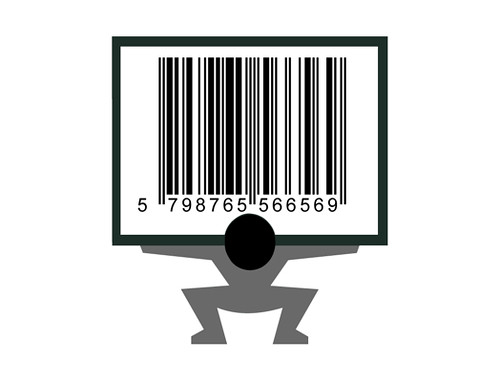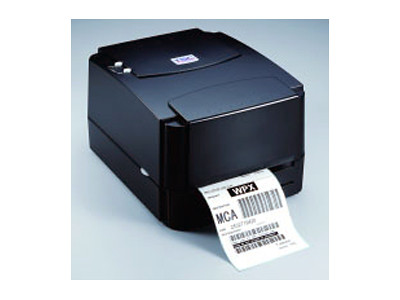16 Ways Barcode Software Helps Small Manufacturing Companies Get Lean
Anyone working in the manufacturing industry knows that the overall goal is to achieve lean manufacturing. This is typically accomplished with ...
3 min read
Shaun Boros Fri, Oct 11, 2013

 As ERP specialists in the areas of barcoding and warehouse automation, Scanco knows that barcoding is crucial to helping you achieve full warehouse automation. Scanco is dedicated to providing quality Sage 100 ERP barcoding solutions (formerly MAS 90 barcoding software and MAS 200 barcoding software) and Sage 500 ERP barcoding solutions (formerly MAS 500 barcoding software) to support your barcoding efforts. When implemented and utilized correctly, barcoding automation can transform your warehouse, eliminate your manual processes, and improve your overall productivity and profitability.
As ERP specialists in the areas of barcoding and warehouse automation, Scanco knows that barcoding is crucial to helping you achieve full warehouse automation. Scanco is dedicated to providing quality Sage 100 ERP barcoding solutions (formerly MAS 90 barcoding software and MAS 200 barcoding software) and Sage 500 ERP barcoding solutions (formerly MAS 500 barcoding software) to support your barcoding efforts. When implemented and utilized correctly, barcoding automation can transform your warehouse, eliminate your manual processes, and improve your overall productivity and profitability.
How exactly can barcoding software transform your warehouse so completely? It is important to first understand that the barcode software alone is not the solution. In order to receive the full benefit of your Sage 100 ERP or Sage 500 ERP barcoding software, you need to follow some barcoding best practices. The following best practices will help you get the most out of your Sage 100 ERP barcoding or Sage 500 ERP barcoding solution and start realizing greater returns.
The first and most important fact to know is that barcoding systems should not replace your current processes, but support them. For any business to succeed, there must be consistent, solid warehouse and barcoding best practices processes in place designed to support the business’ operations. Without well-designed, standardized and predictable processes, you will not produce the results you desire and your productivity (and profitability) will take a significant hit.
The following best practices are principles that - when implemented into your company’s existing processes – will consistently produce quality results. You will see results such as increased efficiency, accuracy, productivity, and return.
Barcoding software solutions, such as Sage 100 ERP barcoding software and Sage 500 ERP barcoding software products, give small to medium-sized companies an advantage they’ve never had in the past. In the old days, if a company wanted to automate their warehouse processes, they needed to hand over a large sum of money. Small and medium-sized businesses could not afford these programs, so they continued to rely heavily on manual warehouse processes.
The introduction of the barcode system, however, has changed this reality for many small and medium-sized businesses. Sage 100 ERP barcoding and Sage 500 ERP barcoding applications allow small and medium-sized businesses to automate their processes and eliminate time-consuming manual tasks. With the proper barcoding device and a barcoding best practice process, warehouse workers can perform multiple processes and procedures simultaneously. This improves warehouse efficiency, reduces lead times, and significantly improves employee productivity.
Once you have implemented your Sage 100 ERP barcoding or Sage 500 ERP barcoding solution, make sure you automate every processes that you can. While you may not be able to fully automate every process in your warehouse, you can significantly improve your productivity (and profitability) by automating your processes wherever you have the opportunity.
Do you have benchmarks in place to measure your performance? Benchmarks are important to your company’s warehouse automation strategy. Without a benchmark with which to evaluate your progress, you have no idea of how you are doing. Get ahold of industry benchmarks (which are standardized results achieved by other companies with similar solutions) to measure your progress. How do your results compare to other companies using the same solution? Take a valid assessment of your company’s progress and implement new practices to support your automation efforts.
You can measure how many shipment errors were made in a particular timeframe, the assembly time per workstation, or other important metrics. By measuring any process or solution against industry and company benchmarks, you can gain a clearer picture of how well your company is performing.
Barcoding best practices and solutions should support your warehouse automation efforts, not hinder them. By implementing the above barcoding best practices, you are setting your company up for success. Stay tuned to our blog for more information about barcoding best practices and procedures.
If you are interested in improving your inventory management efforts, a barcode inventory management system could be the answer for you! Contact Scanco’s manufacturing experts today for more information about choosing the right solution. The team at Scanco can help you implement your barcode inventory management solution quickly and easily, so you can start taking advantage of all barcoding has to offer your company.
Do you have any Sage 100 ERP barcoding (formerly MAS 90 barcoding and MAS 200 barcoding) or Sage 500 ERP barcoding (formerly MAS 500 barcoding) best practices to add? Share your comments in the comment box below this article!
Image from www.freedigialphotos.net

Anyone working in the manufacturing industry knows that the overall goal is to achieve lean manufacturing. This is typically accomplished with ...

Sage 100 ERP Bar Code Technology Saves Time Use of bar coding technology has grown dramatically over the last several years … and for good reason....

Written by Paul Cusano, Sage 100 ERP Consultant Rochester, NY In today’s work environment it is critical to automate business processes. The...